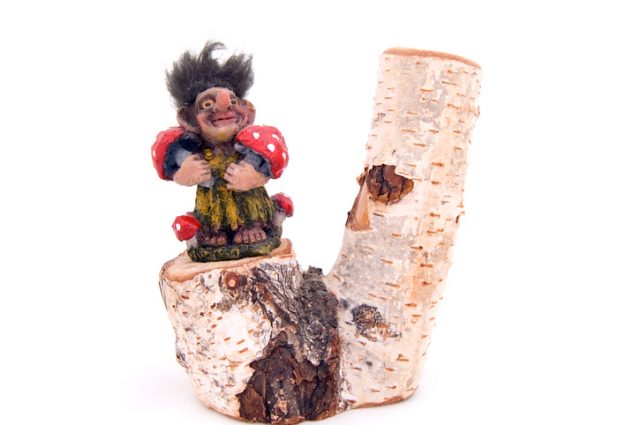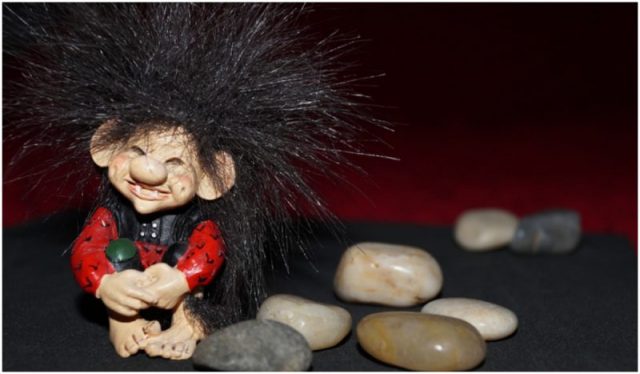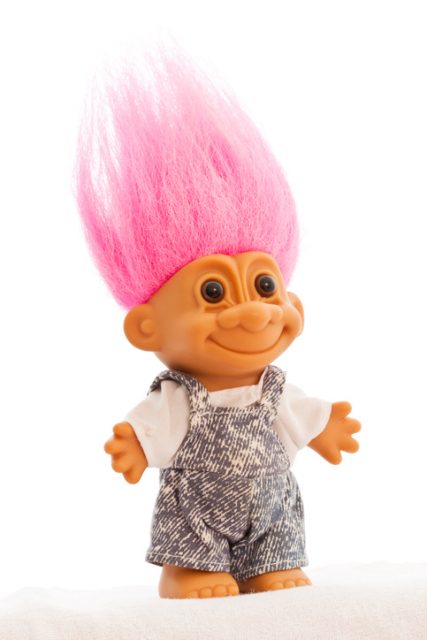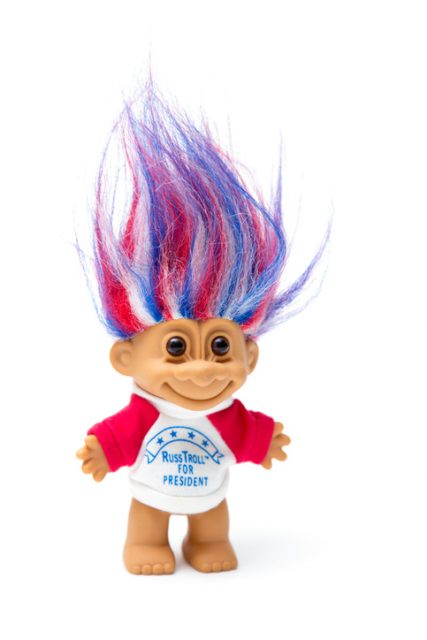A pair of Moon Shoes, a Fisher Price Great Adventures Castle, Super Soaker 50, Talkboy and Talkgirl, a virtual pet Tamagotchi, perhaps a few of them; Talking Baby Sinclair and a Nintendo connected to the TV. Wait, something’s missing from the magical box that contains toys that induce nostalgia for the 1990s. Troll Dolls!
Anyone who was a child in that decade would remember having to do a play with troll dolls, or as their other name goes, the “Good Luck Troll.” Perhaps it was washing their unruly hair in an attempt to make a beautiful new hairstyle, or trying to see whether dresses for Barbie toys would fit the troll instead.
Nevertheless, the story of the Troll Doll is a bit older than the 1990s and leads us to Danish-born Thomas Dam, who carved some of the first samples of these toys from wood. Thomas was likely inspired by his father, a poverty-stricken woodcarver, who, in the 1930s had created a similar simple toy, also out of wood, that was gifted to his sister.
According to the story, Dam and his family were facing financial issues themselves in the 1950s when their family business, a bakery that they ran in the city of Gjøl, started to fail. Dam supposedly made the first troll doll figures as Christmas gifts for his daughters. He didn’t have enough money to purchase any other gifts.

Making these dolls brought the family so much good fortunes, a brand that eventually gained international attention. If anyone’s wondering why the Danish man carved trolls exactly, figures associated with sheer ugliness and gruesome acts, the answer is simple: the omnipresence of trolls in different episodes of folklore across Scandinavian cultures.
Although ugliness has been one of the most well-known dominant traits of all trolls, what Dam achieved was producing something adorable out of something associated with being ugly. He explained the “Good Luck Troll” tag for his irresistible wild-haired, big eared, and prominent nose toys: “They were so ugly, that you couldn’t help but laugh, and when you laugh, luck follows you.”

The Troll Doll production wasn’t that easy for Dam in the beginning. All pieces produced initially came straight from Dam’s family house. However, the toy quickly became popular. People simply loved it, and department stores soon expressed interest in displaying them in their windows for Christmas. It was Thomas’s wife who pushed the idea forward, that this was a lucrative business opportunity.
She was right, as shortly after, the family opened the first small factory, where more people were hired to produce troll dolls. To speed up production, they changed the wooden body of the doll to one made of rubber.
By the mid-1960s, demand for the toy seemed to be out of control and factories producing Troll Dolls started with work outside of Denmark too, as far as New Zealand. The first factory to produce in the United States opened in Florida. The hair of the dolls was a bit different this time, being made out of wool. Synthetic hair started topping the doll’s body only later on.
Thomas Dam seemed to face just one issue and that was resolved only after his death: obtaining copyrights for his “lucky” product, and dealing with copycat manufacturers who popped up all around the world. The Dam company kept the number one place on the market across Europe, though.

The U.S. craze for the troll dolls was not insignificant compared to Scandinavia and the rest of Europe. That can be felt through numerous news articles sharing about troll dolls, some pieces reading that there were even parties themed as “bring your own troll.”
Some people are known for owning extensive collections of Trolls Dolls, possessing hundreds of them. A woman named Paula Dolog, known as “The Troll Princess,” collected troll dolls for most of her life. According to what she said in 2009 to a newspaper in West Virginia, her home state, she had a fair enough number of trolls, so many that a great portion of them had not seen “the light of day in years.” Meaning there hadn’t been many troll parties thrown lately.

The second big wave of troll dolls arrived at the end of the 1980s. It came after an attempt made by a marketing agent in New York, Eva Stark, to re-brand the troll brand into Norfin dolls, the new name resembling a portmanteau of the words “elfin” and “orphan,” as well as both the names of two other Scandinavian countries, Norway and Finland. It is not certain why there wasn’t any mention of the true country of origin, Denmark.
Related story from us: Artist created a pop culture version of the Russian nesting dolls
Thomas Dam, the dedicated father of the troll doll, sadly passed away in 1989. Some newly introduced legislation of 1994 finally allowed the company he started to track down and open lawsuits against copycat producers of the famed toy. Eventually, the company won the copyrights for the adorable product at a global level, and the popularity of the original Troll Doll will persist for more years to come.
